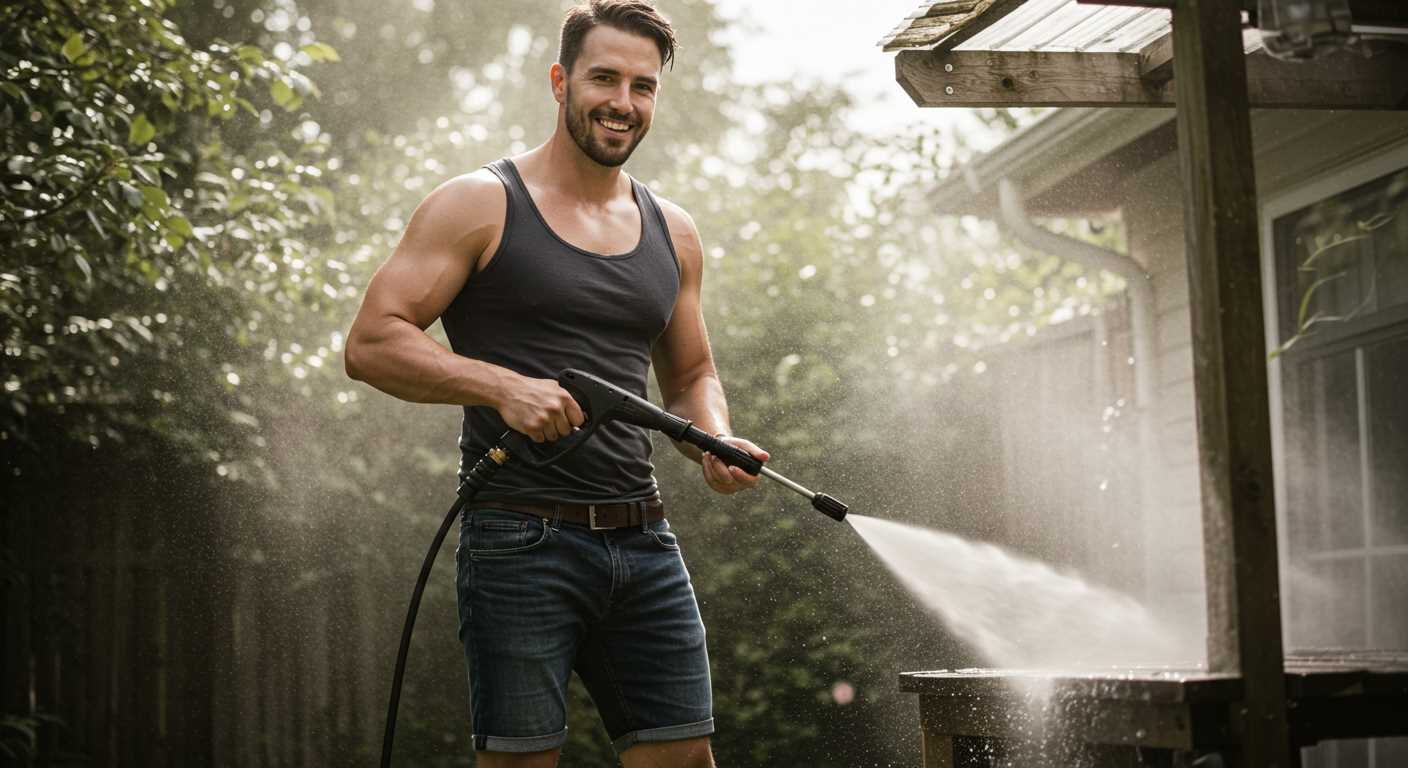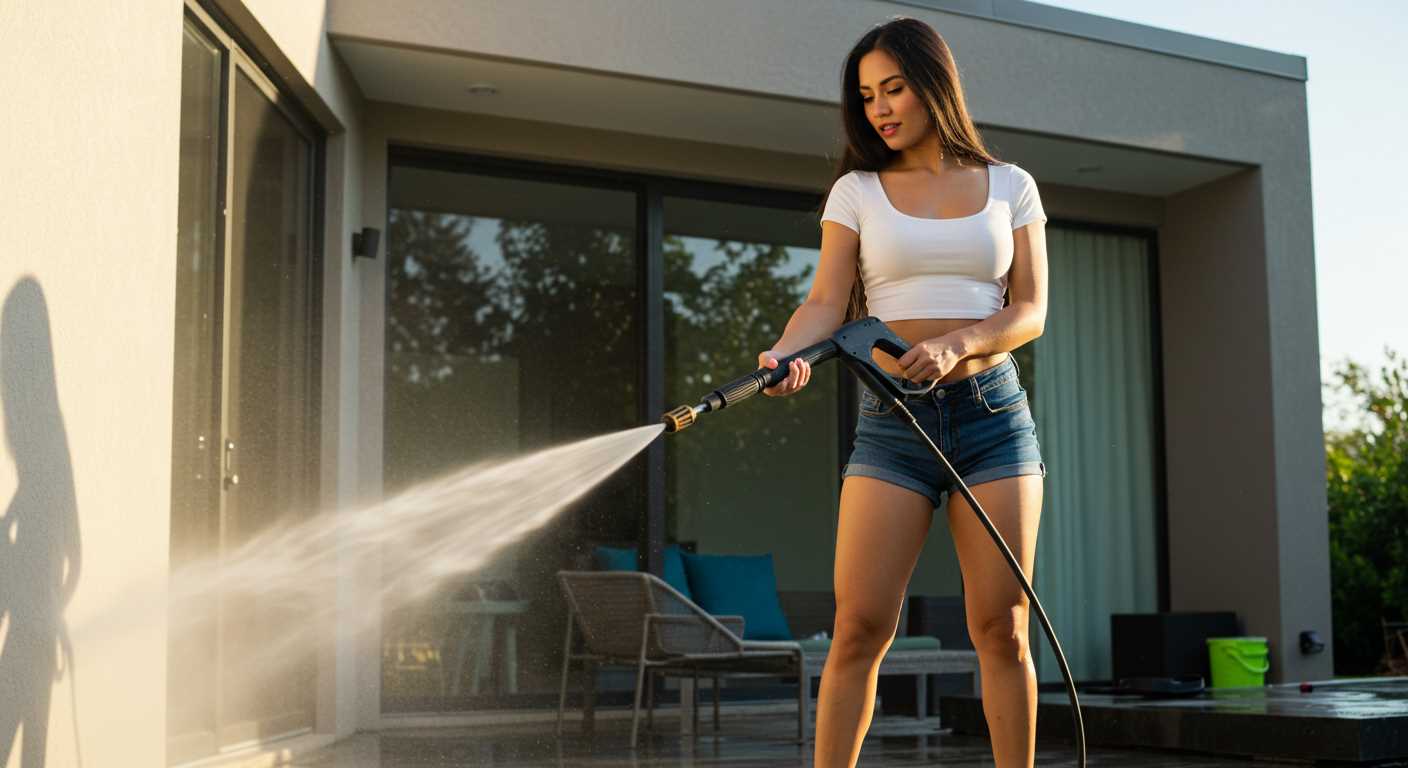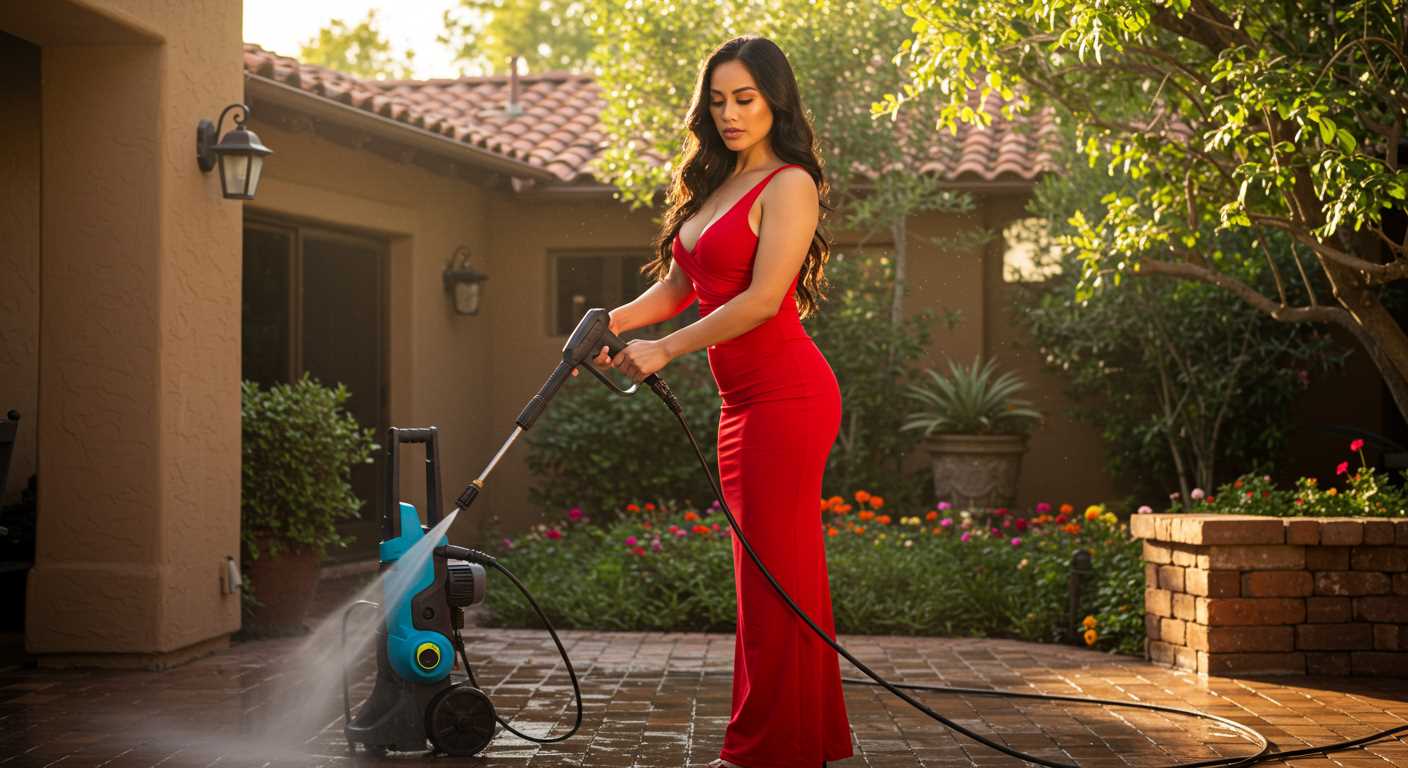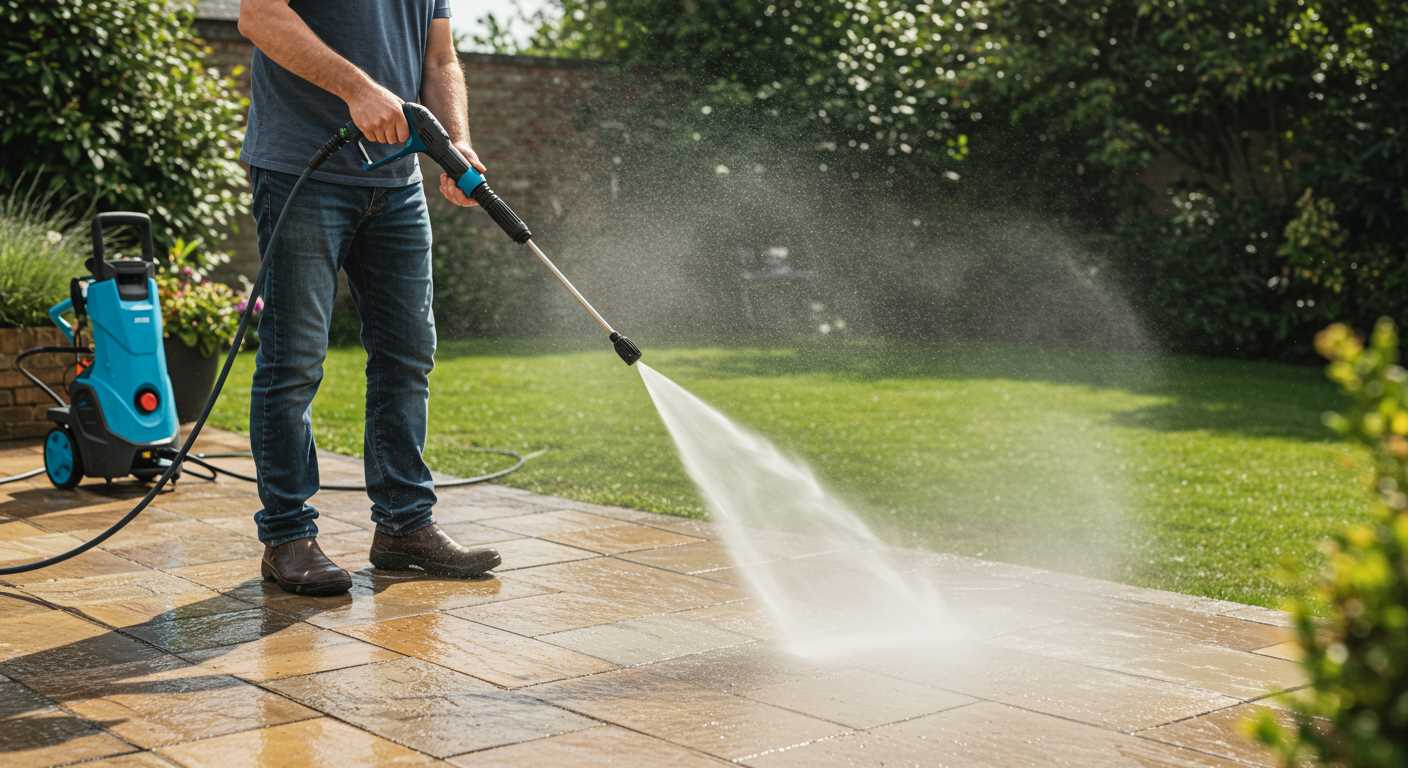



Consider the Sun Joe SPX3000 for its robust performance and affordability. With its 1800-watt motor, it generates up to 2030 PSI and 1.76 GPM, making it a superb choice for tackling grime on patios, driveways, and vehicles. The dual detergent tank system enhances versatility, allowing you to switch between cleaning solutions with ease.
The Greenworks GPW1501 is another excellent option, particularly for those seeking a lightweight alternative. This machine delivers 1500 PSI and 1.2 GPM, perfectly suited for lighter tasks like washing garden furniture or bicycles. Its compact design and onboard storage make it user-friendly and easy to manoeuvre.
If you’re after something more versatile, consider the Karcher K1700, which combines strong cleaning capabilities with a user-friendly design. Its 1700 PSI output and adjustable nozzle cater to diverse cleaning tasks, ensuring you can customise the pressure as needed. The integrated detergent tank simplifies the cleaning process, making it efficient and straightforward.
Finally, the Ryobi RY142300 is worth your attention. Featuring a sturdy 2300 PSI engine, it provides ample power for extensive cleaning jobs, and its design includes an easy-start system and a long hose for increased reach. The variety of nozzles and attachments enhances functionality, making it fit for a range of surfaces.
Key Features to Consider When Choosing a Pressure Washer

Focus on the pressure output, measured in PSI (pounds per square inch). A range of 1300 to 2000 PSI suits most home tasks, like cleaning patios or vehicles. Higher settings are optional for tougher jobs.
Water Flow Rate
Evaluate GPM (gallons per minute) to assess water flow. A higher GPM results in quicker cleaning. For typical household projects, aim for 1.5 to 2.5 GPM.
Motor Type and Power Source

Opt for electric motors for quieter operation and ease of use. Gas models provide more power for larger areas but require additional maintenance. Choose based on your cleaning needs and convenience.
Look for accessories like nozzles and brushes. Adjustable nozzles can modify the spray pattern, giving versatility for different surfaces. Consider foam cannons for extra cleaning solutions.
Storage and portability play crucial roles. Lightweight machines are easier to manoeuvre, while onboard storage for hoses and attachments enhances organisation. Evaluate your space and ease of transport when selecting a model.
Read user reviews to gauge reliability and performance. Brands with strong customer support and warranties often provide peace of mind. Gaining insights from experienced users can guide your decision.
Electric vs Petrol Pressure Washers: Which is Better?
Electric models excel in residential settings, providing convenience and ease of use. They typically have lower noise levels and require minimal maintenance, which I find particularly appealing. The power output, generally sufficient for light to medium cleaning tasks, ranges from 1,300 to 2,500 PSI, making them ideal for patios, vehicles, and garden furniture. Their compact design allows for easy storage, and their lighter weight makes them more manoeuvrable during cleaning sessions.
On the other hand, petrol-powered alternatives are robust and designed for heavy-duty applications. With pressure ratings exceeding 3,000 PSI, these units tackle more challenging surfaces such as driveways and industrial areas with ease. While they offer greater power, they come with increased noise levels and require more upkeep, including regular oil changes and filter replacements. The need to store fuel adds an extra layer of consideration for users.
Electric units connect to an outlet and are ready to use almost immediately, while petrol options require fuel refills and can be cumbersome to start. If quick access and ease of operation are priorities, I lean towards electric models. However, for extensive, demanding jobs, petrol options outperform, providing the necessary power to achieve new levels of cleanliness.
Budget also plays a significant role. Electric variants are generally more cost-effective, while high-end petrol machines represent a larger investment. Assessing the types of tasks intended and the frequency of use should guide your choice. If you anticipate occasional cleaning, an electric option is often splendid, but for regular heavy cleaning, consider investing in a petrol model for maximum efficiency.
In conclusion, if you prioritise portability and user-friendliness, electric machines stand out as the better choice. However, for sheer power and capability in demanding situations, petrol versions shine. Evaluate your cleaning needs carefully before making a selection.
Top Choices for Patio and Driveway Cleaning

I recommend investing in electric units ranging from 1500 to 2000 PSI for patios and driveways, as they balance power and usability perfectly. Brands like Sun Joe and Greenworks offer reliable options that effectively tackle dirt and grime without excessive noise.
Key Models to Consider
- Sun Joe SPX3000 – With a maximum of 2030 PSI and a 1.76 GPM flow rate, this model features dual detergent tanks, making it easy to switch between cleaning solutions.
- Greenworks GPW1501 – Compact and lightweight, it delivers 1500 PSI and 1.2 GPM, ideal for smaller areas while being easy to store.
- Karcher K1700 – This model hits 1700 PSI and includes an outdoor surface cleaner attachment, which enhances cleaning efficiency for larger surfaces.
Attachments and Accessories for Enhanced Performance
Utilising the right nozzles can make a significant difference in the cleaning process:
- Turbo Nozzle – Provides powerful jet spray, ideal for deeply embedded stains.
- Surface Cleaner Attachment – Useful for covering larger flat surfaces, ensuring a thorough clean.
- Rotary Brush – Effective for scrubbing stubborn spots and deeply rooted dirt.
Pairing any of these machines with the right accessories can greatly improve my efficiency and results, ensuring patios and driveways look pristine.
Top Choices for Car and Motorcycle Cleaning
Among the numerous options available, I highly recommend the Kärcher K5 Premium Full Control. Its adjustable pressure settings allow you to tailor the power specifically for sensitive surfaces like car paint and intricate motorcycle finishes. The detergent system enhances cleaning efficiency, making dirt removal effortless.
Another solid option is the Greenworks GPW1501, an electric model known for its compact design and lightweight nature. Perfect for quickly washing smaller vehicles, it delivers 1500 PSI of cleaning power, ensuring an effective wash without the hassle of heavier equipment.
If you prefer a more robust solution, consider the Dewalt DWPW2100. This gas unit packs 2100 PSI, making it suitable for rigorous tasks. Its mobility and power make it ideal for those challenging grime jobs, while the quality construction ensures longevity and reliability.
For versatility, the Sun Joe SPX3000 stands out. With dual detergent tanks, you can store different cleaning solutions for various tasks. This model combines 2030 PSI with affordable pricing, offering great value without sacrificing performance.
Remember to pair these machines with the proper nozzles. A 40-degree nozzle works wonders on softer surfaces like cars and motorcycles, while a 15-degree nozzle can tackle tougher stains on wheels or undercarriages. Maintaining these devices ensures they remain high performers, enhancing durability and effectiveness over time.
How to choose the right machine for sensitive surfaces
.jpg)
Opt for lower PSI settings, typically between 1200 and 1900. This range effectively cleans without damaging delicate materials. Look for adjustable nozzles, allowing you to switch between fan and pinpoint spray, adapting to various cleaning needs.
Utilising a detergent tank is beneficial. Choose mild, eco-friendly cleaning solutions suitable for specific surfaces. Test any detergent on a small, inconspicuous area before full application. Avoid high-pressure settings on painted surfaces, wood decks, and fragile masonry.
A crucial element is the weight and portability of the unit. Compact and lightweight models facilitate manoeuvring, especially in tight or elevated areas. Ensure the hose length accommodates your cleaning space without needing constant repositioning.
| Surface Type | Recommended PSI | Recommended Nozzle | Detergent Use |
|---|---|---|---|
| Wood Decking | 1200-1500 | 25-degree | Yes, mild eco-friendly |
| Painted Surfaces | 1200-1600 | 40-degree | Test first |
| Brick or Stone | 1500-2000 | 15-degree | Optional |
| Glass | 1000-1500 | 40-degree | No |
Always maintain a safe distance of at least two feet from sensitive surfaces. If you’re unsure, employing a broader spray pattern reduces the risk of damage. Testing the unit on an inconspicuous spot prevents unwanted outcomes during the cleaning process.
Must-have accessories for optimising your high-pressure cleaner
Investing in the right accessories can dramatically enhance the performance and versatility of your high-pressure cleaner. Below are some indispensable additions that I highly recommend.
Types of Accessories
- Variety of Nozzles: A set of interchangeable nozzles allows for adjustments in spray patterns. Choose nozzles that range from a narrow, high-pressure jet for tough grime to a wide-angle spray for delicate surfaces.
- Surface Cleaners: Ideal for large flat areas, surface cleaners attach to the end of your wand. They provide an even clean on patios and driveways, significantly reducing cleaning time.
- Extension Wands: These tools extend your reach, making it easier to clean high or hard-to-reach areas without excessive strain.
- Turbo Nozzles: These spin in a circular motion, increasing the cleaning power for stubborn dirt. Perfect for driveways and heavily soiled areas.
- Foam Cannons: For car washing, foam cannons produce thick foam that clings to surfaces, breaking down dirt and grime more effectively than traditional methods.
- Detergent Tanks: Built-in or attachable detergent tanks make it simple to dispense cleaning solutions while you operate the unit, enhancing cleaning efficiency.
Storage and Maintenance Tools
- Hose Reels: Keeping hoses organised prevents tangling and damage. A reel also makes storage simple and saves space.
- Protective Cases: Protective cases safeguard your nozzles and attachments, ensuring they remain in excellent condition while not in use.
- Cleaning Kits: Regular maintenance extends the life of your equipment. Look for kits that include everything from descalers to O-ring replacements.
With these accessories, cleaning tasks will become quicker and more effective. They provide the flexibility to tackle a variety of surfaces and grime types while ensuring your equipment remains in prime condition.
Comparative analysis of popular pressure washer brands

When assessing leading names in cleaning equipment, three brands consistently stand out: Kärcher, Bosch, and Ryobi. Each offers distinct advantages that cater to different customer needs.
Kärcher
Kärcher is renowned for its innovative technology and robust design. Their electric models deliver impressive pressure levels, often exceeding 130 bars, ideal for medium to heavy-duty tasks around residential properties. The range includes features like adjustable nozzles and a built-in detergent tank, making it easy to switch from rinsing to applying cleaning solutions. Moreover, Kärcher’s pressure washers include various accessories that enhance versatility, making them popular among DIY enthusiasts.
Bosch
Bosch focuses on compact units that offer practicality without sacrificing performance. Their models are lightweight and portable, perfect for small storage spaces. With pressure ratings typically around 120 bars, these units excel in light to moderate tasks such as cleaning garden furniture and vehicles. Bosch integrates user-friendly features, including a reliable hose reel and simple assembly instructions, catering to users who prefer straightforward operation.
Ryobi provides a more rugged alternative, particularly in petrol-powered units. With pressure capabilities often going above 200 bars, they are suited for larger outdoor projects, such as cleaning driveways and patios. Ryobi models feature durable construction and are equipped with wheels for enhanced mobility on uneven terrain. This brand is particularly favoured by those who often take on extensive cleaning jobs and require a machine that stands up to rigorous use.
In summary, each brand presents unique qualities suited for particular tasks. Kärcher excels in technology and versatility, Bosch focuses on compact and practical solutions, while Ryobi delivers robust performance for larger projects. Consider your specific requirements and preferences when choosing a model from these reputable manufacturers.
Maintenance tips to extend the life of your pressure washer
Regularly inspect and clean the filter to prevent clogs. This small step can significantly enhance performance and longevity.
Always flush the system with clean water after each use, especially if soap or detergents were utilised. This helps prevent residue build-up.
Store in a dry and frost-free environment. Exposure to extreme temperatures can cause components to deteriorate or crack.
Inspect hoses for any signs of wear or damage. Replace them promptly to avoid leaks and ensure optimal functionality.
Check oil levels in petrol models regularly. Low oil can lead to engine damage, so maintaining the right level is key for operational health.
Use the correct nozzles for the task at hand. Using an inappropriate nozzle can strain the motor and lead to premature failure.
Keep connections tight to avoid water loss. Loose fittings can lead to inefficiency and component damage over time.
Periodically check for any loose screws or bolts. Taking time to tighten these can prevent future mechanical issues.
Invest in a quality cover to protect against dust and moisture during extended periods of non-use. This simple action helps safeguard internal mechanisms.
Follow the manufacturer’s maintenance schedule included in the manual. Adhering to these guidelines ensures all components are properly cared for.








